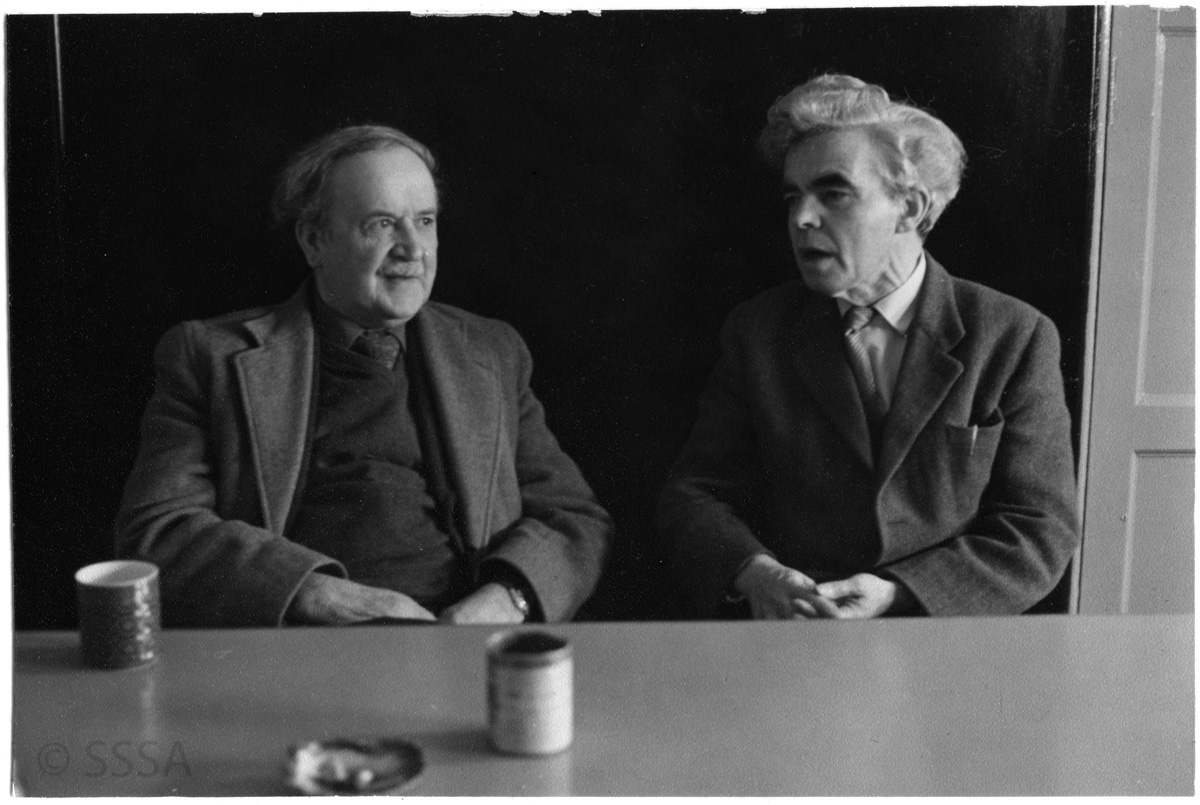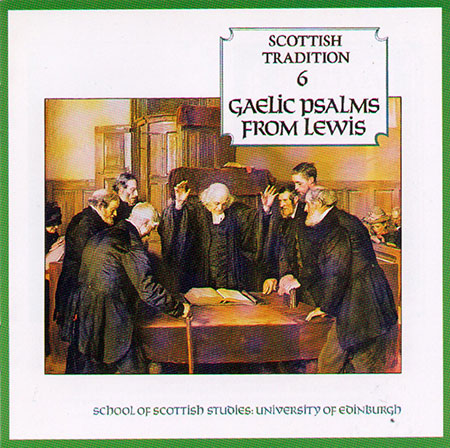
An image of our Tale archive with a Progress Pride flag filter. The image includes cabinets, index card boxes on top, and shelving with books above.
Throughout Scottish tradition and history we have heard many iterations of the Love Song, be it through themes of unrequited love, courtship, lamentations at the loss of a lover, or even bawdy tunes and romance. No matter the theme, there is always one thing in common – that they are a man and a woman’s love song. There is not much in the way of recorded queer love in traditional Scottish songs, and it would have been near impossible for these to enter into the mainstream of known love songs. However, in my research on what we hold on the traditional Man’s Love Song and Woman’s Love Song, I have found some content that can be ‘queered’. Through a mix-up of pronouns in song or change of the gender of the singer and the protagonist we can find queer undertones and subtext within these traditional love songs.
Within the Man’s Love Song, we of course have many examples of songs with a male protagonist describing his love or telling a tale of love about a woman. I will take you through a few examples of songs that can be ‘queered’ through being sung by a female singer and no change of the gender of the person the protagonist loves. Below are just a few example of songs that we hold that can be viewed through this lens.
For example, there is “Mo Ghaol an Tè Nach Dìobair Mi”. This version, sung by Mary MacRae and recorded by Donald Archie MacDonald is a Man’s Love Song on how ‘he will always stand by beautiful Mary as being a woman of virtue.’ What I like about this version is that the lover is named, and through queering can be seen as a romantic tune about the virtues of women as recognised and sung by another woman. Listen to this track on Tobar an Dualchais linked below:
MacRae, Mary, “Mo Ghaol an Tè Nach Dìobair Mi”, recorded by Donald Archie MacDonald, The School of Scottish Studies Archives, SA1964.062, Tobar an Dualchais / Kist o Riches, http://tobarandualchais.co.uk/en/fullrecord/104516
There are also examples of unrequited love. “Och Mar a Tha Mi ‘s Mi nam Aonar”, sung by Peggy Morrison and recorded by Morag MacLeod is of a man’s love song for a beautiful girl from Lochcarron. The protagonist hopes she gets a man who is worthy of her. As this particular recording is sung by a woman, we can view this recording as being about a woman’s unrequited love for the beautiful girl from Lochcarron, but they cannot be together so she hopes she finds a good man who is worthy of her love. Listen below:
Morrison, Peggy, “Och Mar a Tha Mi ‘s Mi nam Aonar”, School of Scottish Studies Archive, SA1975.210.A4a, Tobar an Dualchais/Kist o Riches, https://www.tobarandualchais.co.uk/track/108130?l=en
There is also another about promises of marriage, sung by Nan MacKinnon, in “Gur Tu Mo Chruinneag Bhòidheach.” In this love song, ‘a man praises his beautiful darling. He would do many things if she promised to marry him’. Different from “Och Mar a Tha Mi ‘s Mi nam Aonar”, this song allows for a reading of a woman promising many things to her lover if she married her, and is not about unrequited love or not being able to marry the lover described. Listen below:
MacKinnon, Nan, “Gur Tu Mo Chruinneag Bhòidheach”, School of Scottish Studies Archive, SA1958.132.5, Tobar an Dualchais/Kist o Riches, https://www.tobarandualchais.co.uk/track/97353?l=en
There are also a few examples of The Woman’s Love song as sung by men about a man the protagonist longs for or is telling of love for him. Although we have less examples of men singing the Woman’s Love song, there are still more recordings of this type within the collections.
The song “Ò Hù Tha Mo Ghaol air Òigear a’ Chùil Dualaich” is a, ‘woman’s love song to the young man with the beautiful hair.’ This version is sung by John MacLeod and recorded by Polly Hitchcock. Again, through the singer being male, we can hear the description of his love and admiration of the man with beautiful hair. Listen below:
MacLeod, John, “Ò Hù Tha Mo Ghaol air Òigear a’ Chùil Dualaich”, School of Scottish Studies Archives, SA1951.43.A7, Tobar an Dualchais / Kist o Riches, http://tobarandualchais.co.uk/en/fullrecord/90295
In “Cha Bhi Mi Buan ‘s Tu Bhith Bhuam”, the singer, ‘will not survive if she is parted from her beloved, whom she has loved since she was young. She sits on the hillock, looking over the narrows seeing his boat passing.’ This version sung and recorded by Calum Iain MacLean can be viewed about the sadness of the childhood lover leaving for sea and being so in love it is difficult to part with him. Listen below:
MacLean, Calum Iain, “Cha Bhi Mi Buan ‘s Tu Bhith Bhuam”, School of Scottish Studies Archives, SA1953.79.1, Tobar an Dualchais / Kist o Riches, Tobar an Dualchais
With Queering the Archives, we are creating a finding-aid to help other’s locate queer and related records. If you are interested in responding to these recordings with your own work or researching our queer collections, please do just get in touch with us. Visitor Information | The University of Edinburgh
Why not take a look at the material we hold remotely on Tobar an Dualchais and think of ways in which our sound recordings can be ‘queered’? If you are interested in recreating our material in any form, please get in touch with us or submit an access to digitised collections form directly. Access to Digitised Collections | The University of Edinburgh
As always, we would love to hear thoughts on the material we hold and would love for you to work with us and our records.
Queering the Archives will have our very first workshop held on the 25th August from 13.00 – 15.30. This is a public workshop and is open to all under the LGBT+ and Queer umbrella and allies. Get your tickets here: https://www.eventbrite.com/e/165396797273
This will take you through understanding of queering, what we are doing for Queering the Archives, and working with our queer records and will involve discussion and practical work on improving our search-terms and catalogues. Access to event via QR code below:





